Prof. Dr. Anne-Claire Fabre
PROJECT LEADER
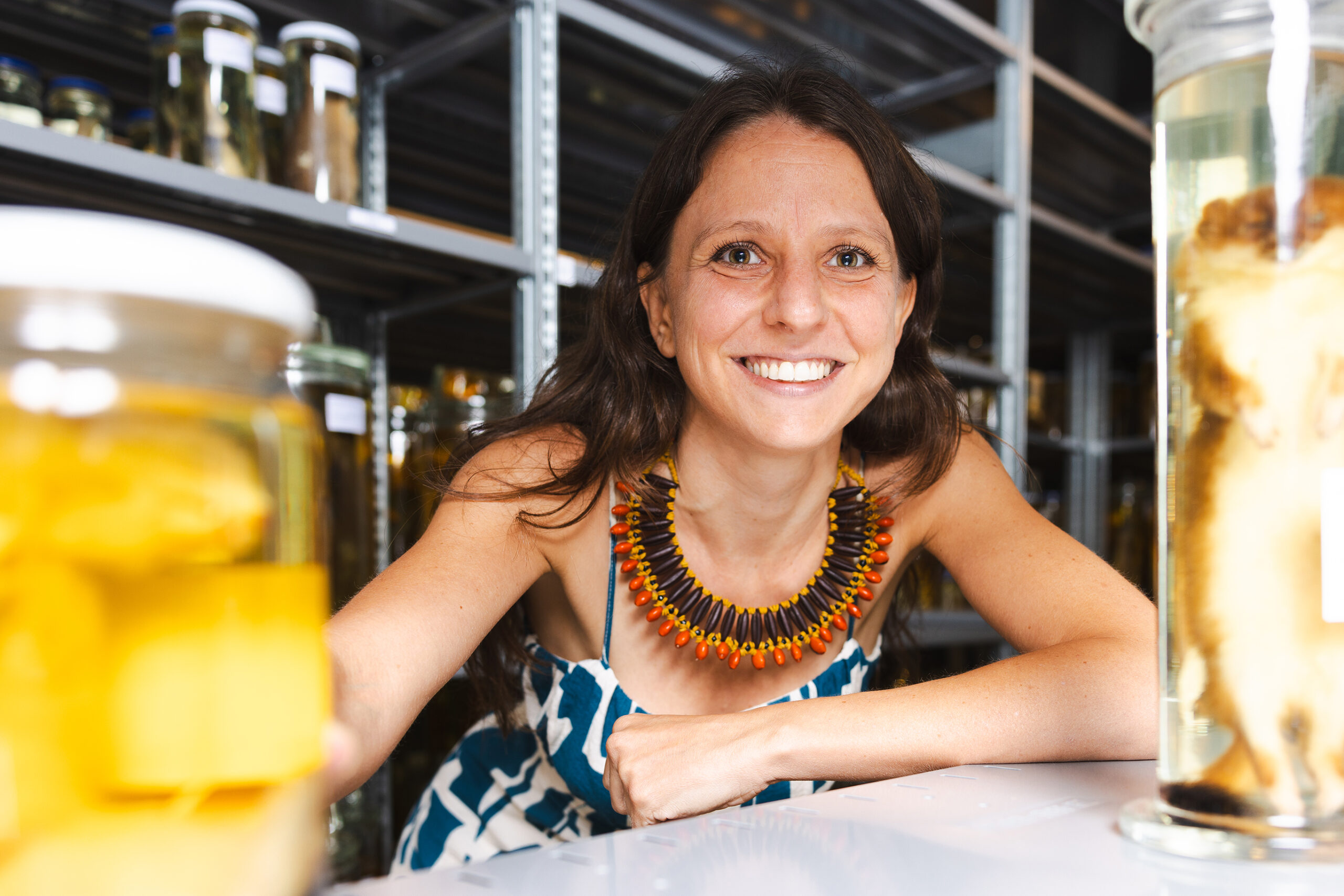
Anne-Claire Fabre is the new mammal curator working at the Naturhistorisches Museum der Burgergemeinde Bern. Her research interest is mainly focused on the understanding of the diversity of life. To do so, she quantifies the morphology of animals and try to link to their function and ecology. By doing so, she tries to understand the evolution of life on Earth. A major goal of her research is to disentangle the impact of the different internal (e.g., development) and external (e.g., environment, climate) factors shaping the past and current diversity of organisms and how it relates to function (e.g., feeding and locomotion).
To understand the multiple factors shaping the current diversity of form and function in organisms, she uses cross-disciplinary approaches, combining specimen-based work with in vivo studies (in zoos and in the field) and quantitative analyses of the musculoskeletal system (bone and muscles from museum collections) in the context of function (feeding and locomotion), behavior, and development. She integrates a set of different approaches from several fields in biology to quantitatively link morphology, behavior, and function in several group of vertebrates in order to shed light on the evolution of the paleoecology of extinct species.
She has been awarded external grants to fund fieldwork and students in addition to obtaining competitive funding for her own salary and project from French and EU funding agencies. This has enabled her to work in five different countries (France, UK, USA, Switzerland and Germany) and mainly in museums (MNHN, Paris, France; NHM, London, UK; Paläontologisches Institute und Museum, Zurich, Switzerland; MfN, Berlin Germany). As such, she had a deep connection and affinity with museum collections and is delighted to be part of the Naturhistorisches Museum Bern.
She has extensively worked with Carnivora (dogs, cats, otters, badgers, bears and relatives) in particular, as well as Primates (us, lemurs, orangoutans, gorillas, chimpanzees and relatives), and marsupials (kangaroos, opossums and relatives). As a curator, she will actively maintain the collection and be sure that they are up to date with new taxonomic findings. She will also address societal concerns by contributing to demonstrate how crucial collections are by showing the value of biological specimens to the public, why they are important for science, innovation, and education as well as to understand the past, present, and future impact of climate and environmental changes on biodiversity.
Recently, she was awarded a prestigious ERC Starting Grant to start her research group. The aim of her ERC project is to understand why metamorphosis is so common in animals and whether it is an advantage for them to be able to produce different morphologies in comparison to animals that do not show metamorphosis (including mammals like us, for example), especially in the context of environmental and climate change.
Dr. Vivien Louppe
POSTDOCTORAL FELLOW
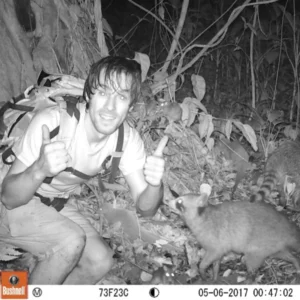
Vivien just joined the Meta-Morphosis team as a post-doctoral fellow. He is an early-career evolutionary biologist focusing on vertebrate ecology and evolution. He will study the role of life cycle strategy on morphological diversification in salamanders and newts. He will explore the relationship between life cycle strategy and head morphology, both at the inter- and intra-specific levels. He will also explore the influence of other factors, such as environmental characteristics and diet, linking form and function in larvae and adults of several species of salamanders.
Over the past five years, his research mainly focused on the distribution, dispersal and adaptation of invasive species (frogs such as the African clawed frog, lizards such as geckos, and mammals such as raccoons and mongooses). He has worked to understand the introduction history of invasive species in Antilleans islands (Guadeloupe and Martinique), why these invasive species are good at dispersing and adapting to new environments, and whether they are a threat to endemic species. To do so, he combined a variety of experimental approaches and techniques (e.g. niche modelling, geometric morphometrics, population genetics, stamina tests or metabolic rate measurements) in a comparative framework.
Isabelle Toussaint
PHD STUDENT

Isabelle is passionate about herpetology. She did her academic studies in Paris. She obtained a bachelor’s degree from Paris Diderot and a Master’s degree from the Muséum National d’Histoire Naturelle. She has multiple skills ranging from genetics, behaviour, over anatomy to kinematics. She did a first internship in the field of taxonomy under the supervision of Aurélien Miralles where she compared and evaluated four tools of molecular diagnosis available to taxonomists. During her second internship, she was working under the supervision of Anthony Herrel and Anne-Claire Fabre on the impact of habitat use on the kinematics of prey capture in Caudata.
She just started her PhD and is joining the Meta-Morphosis team for four years! She will determine how developmental strategies foster patterns of morphological and functional variation throughout ontogeny using the head of salamanders as a model system. She will also test whether, and how much, larval stages overlap in morphology and function with adults. Finally, Isabelle will study the interplay between function and form in order to interpret form in a functional context which will ultimately allow her to disentangle the impact of diet and feeding medium on form and function, from the developmental impacts. Her project will involve fieldwork (USA, Mexico), kinematics, behaviour, imaging (CT scanning and segmentation), phenotypic analyses (geometric morphometrics) and comparative phylogenetic analyses.
Morgane Fournier
PHD STUDENT
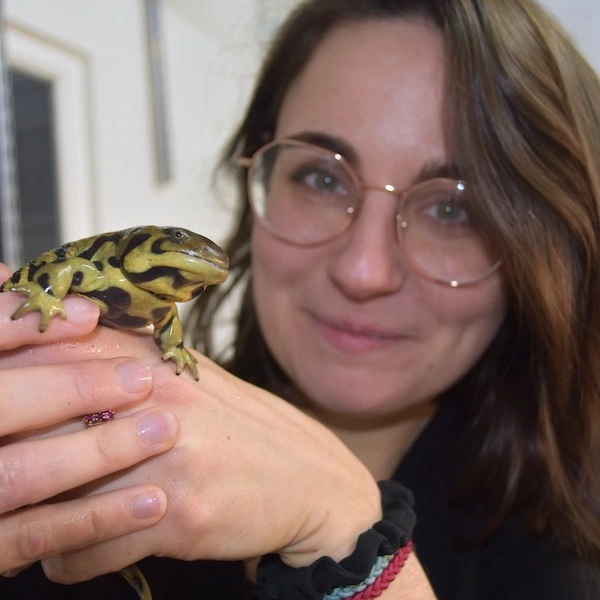
Morgane is passionate about the morphological diversity of living and extinct vertebrates. She studied in Paris, starting with a bachelor’s degree at Université Pierre et Marie Curie, a first master’s degree at Sorbonne Université, and a second master’s at the Centre de Recherche Interdisciplinaire (Université de Paris). She had the opportunity to work on various internship topics in terms of methodology and taxa and to develop skills on morphometrics, anatomy, functional morphology, and finite element analyses. She then worked as engineer on the X-ray Reconstruction of Moving Morphology of the bird vocal system.
She has just joined the Meta-Morphosis team for her four-year PhD. She will explore the impact of life cycle variation on morphological diversity in European populations of salamanders and newts. She will quantify the morphological variation in several populations (larva and adult) using linear measurement and geometric morphometrics using collection specimens from several European museums. She will also determine whether populations with a complex life cycle (biphasic and larviparous) have higher morphological variability than populations with a simple life cycle (paedomorphic, and pueriparous). Finally, she will test whether European salamander and newt populations with complex life cycles are more modular than populations with a simple life cycle, and will assess the pattern and magnitude of phenotypic modularity and integration for each data set depending on developmental strategy. Along with her main PhD project, she will lead a project about the reconstruction of the paleobiology of extinct species of salamanders.
Morgane Taillades
MASTER’S STUDENT
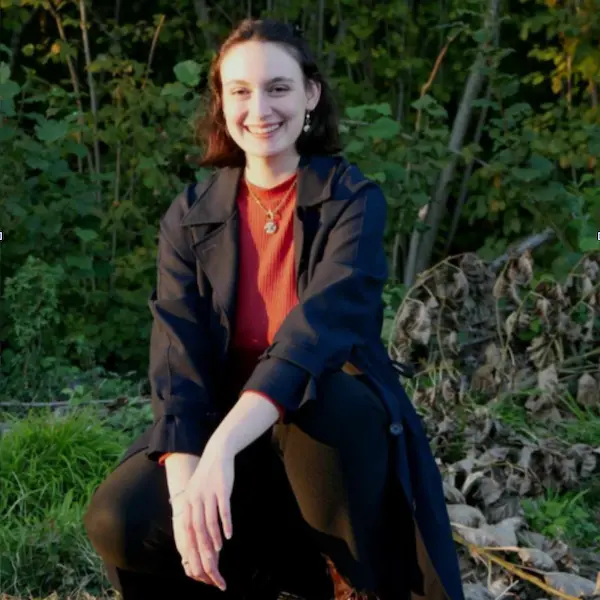
Morgane is a French Master’s student at AgroParisTech. She started an internship with us in February 2024 and will be studying the musculoskeletal system of the head of salamanders and newts depending on their life cycle. Morgane is a talented drawer and is also in charge of the outreach of the project.
Project Collaborators
Dr. Anthony Herrel
PROJECT COLLABORATOR
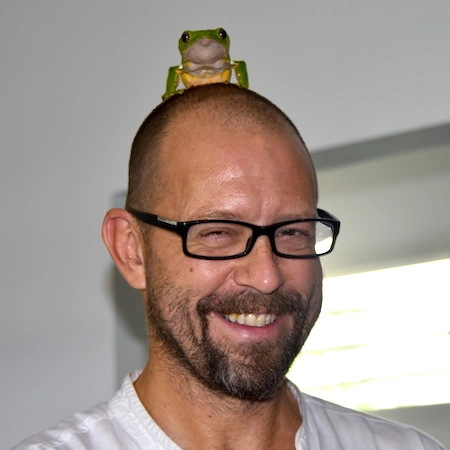
Anthony Herrel is a permanent researcher employed by the French CNRS and working at the Muséum National d’Histoire Naturelle in Paris. His main research interest concerns the evolution of complex integrated systems. By combining a variety of experimental approaches and techniques in an explicit comparative framework, he tries to gain insights into the evolution of such systems. He mostly works on the feeding and locomotor system in vertebrates.
Dr. Celeste Pérez-Ben
PROJECT COLLABORATOR
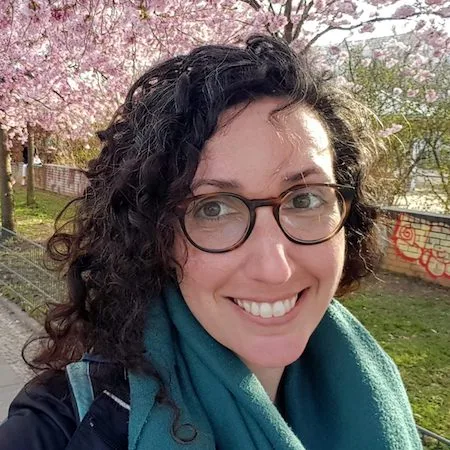
Celeste’s main research interest is the relationship between development, variability, and morphological evolution, with a focus on how the fossil record might shed light on the matter. In particular, she uses quantitative approaches combining (mostly morphometric) data from fossil and extant taxa to understand some aspects of the evolutionary history of frogs, salamanders, and their putative ancestral group, the temnospondyls.
Dr. Gabriel Ferreira
PROJECT COLLABORATOR
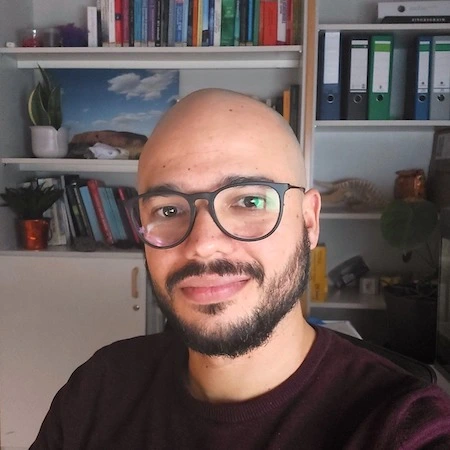
Gabriel Ferreira is a research associate at the Senckenberg Centre for Human Evolution and Palaeoenvironment (HEP) in Tübingen. His research focuses on the relation between morphology and function in extinct and extant tetrapods, mostly reptiles, with the aid of digital tools and analyses.
Prof. Dr. Guillermo Velo-Antón
PROJECT COLLABORATOR

Guillermo Velo-Antón is an evolutionary ecologist interested in conducting integrative research to better understand how complex traits evolve in nature, and the eco-evolutionary implications of novel traits. In particular, he has been i) characterising the phenotypic, ecological and genetic differentiation of a reproductive shift (a type of viviparity: pueriparity) in the fire salamander, Salamandra salamandra; ii) identifying the environmental drivers that promoted this reproductive shift , and iii) evaluating the critical eco-evolutionary implications of this major ecological and evolutionary transition, as it entails independency from water.
Dr. Julien Clavel
PROJECT COLLABORATOR
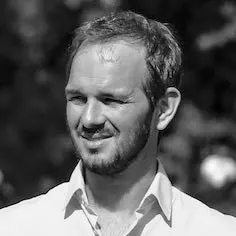
Julien Clavel is an evolutionary biologist generally interested in the processes that generate, maintain, and ultimately eliminate biological diversity through time (macroevolution). To this aim, he is using and developing comparative and quantitative analytical approaches, especially modelling and phylogenetic comparative methods, for understanding the evolutionary consequences on phenotypic and taxonomic diversity of species interactions and their interactions with their environments.
The modelling approach he takes is essentially developed on the phylogenetic framework which is providing the historical and evolutionary context needed to tackle long standing and fundamental questions in macroevolution. In particular, this modelling approach on phylogenies defines a unified analytical framework for the study of both extant and fossil data and allows assessing how species have evolved on spatial and temporal scales that are otherwise inaccessible to experimental biology.
Prof. Dr. Mathieu Denoël
PROJECT COLLABORATOR
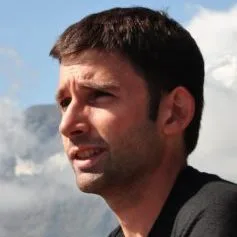
Mathieu’s main research aims to determine the costs and benefits of alternative developmental pathways in amphibians (paedomorphosis vs metamorphosis). His approach is multidisciplinary, especially in behavioural, trophic, dispersal and landscape ecology but also in integrating biogeography, morphology, and genomics. His research encompasses lab and fieldwork in a large range of environments across Europe, North America, and Asia. He is also an expert in using video-tracking technologies in behavioural sciences. Particularly inquiry by biodiversity loss in natural amphibian populations, he embeds his research program in a biological conservation framework to explain adaptation and decline of native species in function of environmental disturbance and he considers not only amphibians but also the whole freshwater communities they live with.
Dr. Matteo Fabbri
PROJECT COLLABORATOR
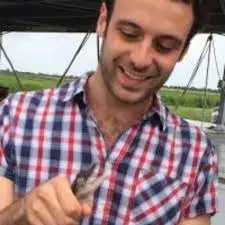
Matteo is an evolutionary developmental biologist. His research focuses on the understanding of the morphological changes encountered by the brain depending on life cycle strategy and associated habitats.
Prof. Dr. Nadia Fröbisch
PROJECT COLLABORATOR
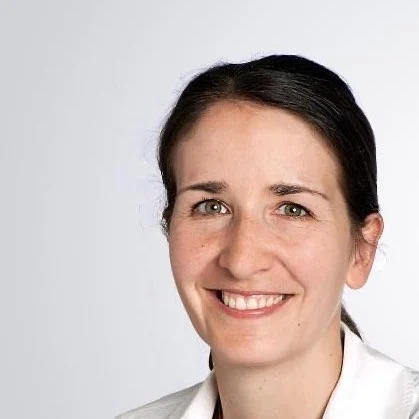
Nadia Fröbisch is an evolutionary developmental biologist studying both paleontology and neontology. She will investigate how salamander limb development depends on life cycle strategy to better understand the evolution and development of tetrapod limbs and the evolution of high regenerative capacities in tetrapods and other sarcopterygians throughout their evolutionary history.
Project Alumni
Fanny Gagliardi
PROJECT INTERN
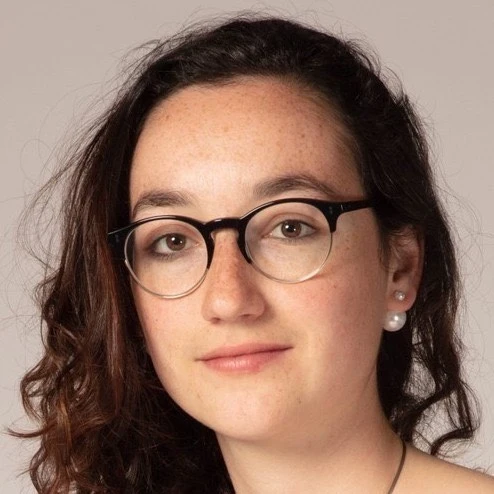
Fanny Gagliardi joined the Natural History Museum of Bern and the University of Bern for a six-month internship where she worked with Anne-Claire Fabre, Stefan Hertwig, Vivien Louppe and Morgane Fournier on the determination of the geographical origin of invasive populations of the Italian Great crested newt and their impact on native populations of the Great crested newt. She is now a PhD student in the team of Dr. Alexa Sadier at the University of Montpellier.
She is an evolutionary biologist with a master’s in biodiversity, conservation, ecology, and evolution from the University of Neuchâtel. Her master’s thesis was in evolutionary genetics and bioinformatics on the evolution of resistance in a fungal pathogen of wheat.
Her main interest is the identification of genes coding for remarkable morphological traits and their evolution over time. She is doing literature research on the paleontological origin of bats, their ability to echolocate and fly as well as the mechanism underlying the extreme longevity of certain bat species. In addition, she is enthusiastic about botany with a collection of over forty tillandsias (bromeliads) that she identified.
Rüya Eylül Arslan
MASTER’S STUDENT
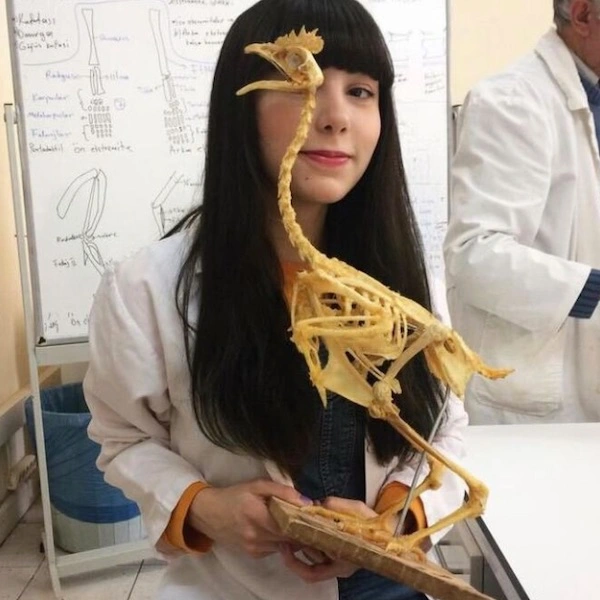
Rüya Eylül Arslan is from Turkey and completed her master’s degree as a member of the Meta-morphosis Project. She did her thesis on adaptive and non-adaptive radiation in lungless salamanders. She is also interested in many other topics in the field of biology, such as paleoecology. She contributed to the herbarium at the University of Istanbul by preparing specimens and updating specimens already in the collection. In her free time she likes being creative and taking microscopy photos. In Turkey she did children’s book illustrations and worked as a voice actress.
Clara Pierson
MASTER’S STUDENT
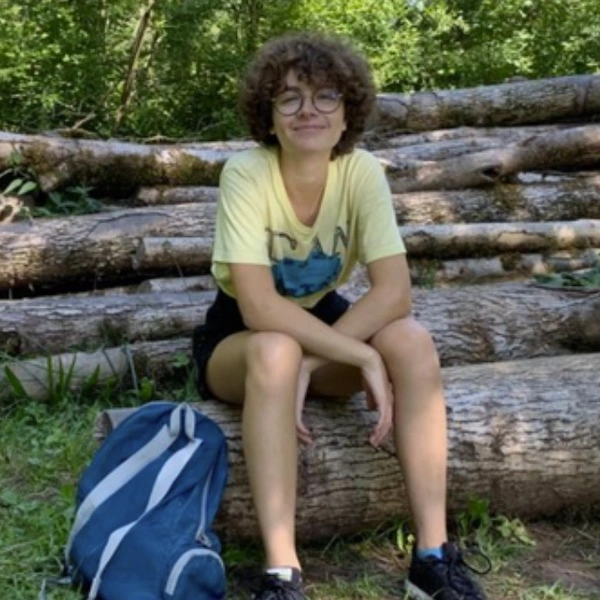
Clara completed her bachelor’s at the University of Lausanne and joined the Meta-morphosis project as a master’s student at the University of Bern under the supervision of Morgane Fournier and Anne-Claire Fabre. The focus for her master’s thesis was on unraveling the environmental influences on the morphological evolution of European salamander and newt populations.